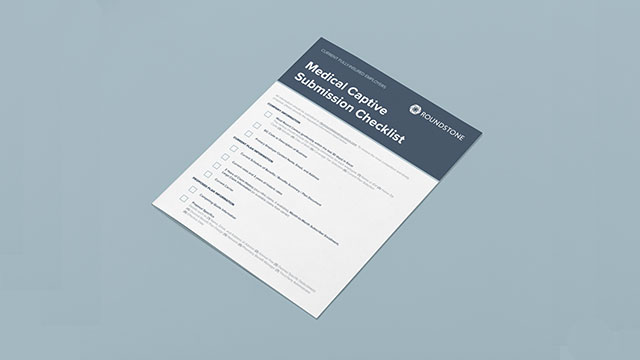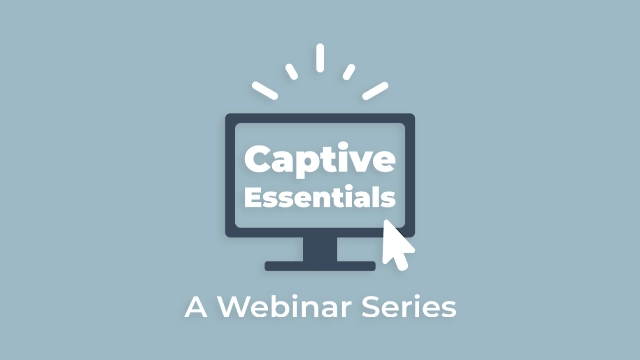Highlights
- Employee benefits education is a vital element of maintaining a cost-effective self-funded health insurance plan for your employees.
- Educating your employees on self-advocacy allows them to receive better care and reduces your healthcare expenses.
- Self-advocacy involves employees asking healthcare providers important questions to make informed decisions about care and substantially improve savings in a self-funded health insurance plan.
- To further promote self-advocacy in your employees, develop a robust employee benefits education strategy that keeps them informed about healthcare choices and costs.
Employee benefits education is vital to the cost-efficiency of your self-funded health insurance plan. When your employees understand their group captive healthcare benefits, they can more easily implement self-advocacy techniques to make informed decisions about their healthcare.
Employee Benefits Education: What is Self-Advocacy and How Can It Improve Savings in a Self-Funded Health Plan?
The term self-advocacy in healthcare refers to the idea that patients have the right to share in decision-making regarding their care. At one time, many patients rarely questioned their doctors on the tests, treatments, and procedures physicians recommended and performed.
However, over the last several decades, a growing movement toward self-advocacy and patient education has changed how patients and doctors approach healthcare. Self-advocacy can be an important cost-savings strategy in a self-funded health insurance plan.
The National Coalition for Cancer Survivorship self-advocacy handbook offers a general outline of the main principles of member self-advocacy. These include:
- Seeking information/education on treatments, costs, risks, and services
- Learning communication skills, such as asking questions and discussing care options
- Solving problems by using a cooperative approach
- Negotiating with healthcare providers to have their needs met
In today’s healthcare industry, the prevailing attitude is that self-advocacy is vital to patients receiving care that meets their physical, mental, social, emotional, and financial needs.
Why Self-Advocacy Is Essential for Controlling Healthcare Expenses in Self-Insurance
In addition to personalized care, self-advocacy is a critical element of controlling healthcare expenses for companies that self-fund their own health insurance plans. A 2019 review in the Journal of the American Medical Association estimated the following breakdown of wasted dollars in the healthcare system:
- Failure of care delivery. Failure to deliver treatment using a high standard of care of clinical best practices costs an excess $102.4 billion to $165.7 billion annually.
- Failure of care coordination. Failure to coordinate with other care providers resulting in over or under treatment or redundant care is responsible for $27.2 billion to $78.2 billion in unnecessary expenses each year.
- Overtreatment or low value care. Unnecessary treatment or treatment for which the risks of the treatment outweigh the possible benefits) accounts for $75.7 billion to $101.2 billion in wasted dollars annually.
Combined with additional waste estimates, the review found that the U.S. healthcare system wastes between $760 and $935 billion each year. This is one reason why health insurance has become so expensive in this country.
One of the most significant ways to reduce healthcare spending waste is for patients to understand their healthcare options and use self-advocacy techniques to avoid unnecessary or costly care. When you equip your employees with the tools to ask questions and understand the cost and necessity of procedures, they can opt for more cost-effective solutions. That’s the beauty of self-funded health insurance — you are in control.
The benefits of self-advocacy for your business include fewer expenses related to redundant and unnecessary testing and procedures. Self-advocacy can also reduce costs associated with chronic care management, pharmacy spending, and emergency room expenses.

What Questions Should Your Employees Ask Healthcare Providers?
One of the best ways to promote self-advocacy among your employees is to equip them with questions they can ask during a healthcare provider visit. Since 2012, the American Board of Internal Medicine (ABIM) self-advocacy framework has helped patients make better care decisions that focus on necessary, evidence-based treatment that poses the least risk possible.
ABIM supports patient-provider conversations by recommending patients ask five questions when they visit their doctor. Educating your patients and encouraging them to speak to their providers about these points can be an effective way to improve their health and lower your employer healthcare costs.
Here are the five questions:
Do I Really Need the Procedure?
Employees should ask their provider if they require the test, treatment, or procedure. This question can help your employee determine the necessity of the proposed treatment and explore alternative options.
What Are the Risks?
Patients have a right to understand the risks inherent in their physician’s proposed treatment plan. By understanding the risks they face, they can decide whether or not they want to undergo the treatment or consider alternatives.
Are There Simpler, Safer Options?
Patients often have simpler or safer options for treating their condition. For example, if your employee has high blood pressure, their physician may prescribe medication rather than discussing alternative approaches such as the DASH (Dietary Approaches to Stop Hypertension) diet.
DASH is an effective treatment for high blood pressure and is a safer, less costly option for your employee and your company.
What Happens if I Don’t Do Anything?
Your employees can benefit from discussing non-intervention with their doctor. With time, the body can heal some conditions without outside intervention. Your employees should ask this question to fully understand their treatment options.
How Much Does it Cost?
Asking how much treatment will cost is a vital question in self-advocacy. The ABIM believes patients should know the cost of care upfront rather than waiting to discuss expenses with an insurance provider or hospital administrator. Knowing the costs of treatment can empower your employees to make better healthcare decisions. This can result in savings both to the employee as well as the employer of the self-funded health insurance plan.
How to Encourage Self-Advocacy in Your Group Captive Self-Funded Insurance Plan
To encourage self-advocacy among your employees, consider implementing care management, building your plan around employee benefits education, and sharing transparent claims data with your workers. This goes a long way to improving the savings in your self-funded health insurance plan.
Provide Employee Incentives
Provide employee incentives to encourage self-advocacy in your group captive self-funded health insurance plan. Employee incentives steer members into making cost-effective, beneficial decisions regarding the providers and services they utilize on the plan. Consider implementing incentives like:
- Discounted premiums for various tasks or benchmarks
- Well-being challenges with prizes
- Co-pay reimbursement
- Higher co-pays for non-cost effective services like urgent care or emergency room visits
Implement Care Management Teams
Implement care management teams as part of your group captive health insurance plan. Care management uses a patient-centered approach to healthcare and focuses on coordination of care to reduce unnecessary and redundant procedures and treatments.
This approach can include adding concierge or case management services to your group captive plan.
Concierge health services give your employees better access to their primary care physician, which allows them to make more information decisions about their health.
Case management services provide care teams for employees with health conditions like diabetes, giving them focused care and access to better well-being resources and education.
Distribute Educational Information
Knowledge is power, so distribute educational information to your employees. How? Send email campaigns, hang flyers in break rooms and common areas, and post articles to the company intranet. Employee well-being programs that promote nutrition, lifestyle, and mental health changes through coaching and educational resources are also a great way to motivate employees to be more proactive about their care.
Share Transparent Claims Data and Care Costs
Whenever possible, share transparent costs with your employees. A Roundstone plan includes access to your anonymized claims data through the CSI Dashboard. You can share this data with employees to make them aware of the actual cost of healthcare procedures, which contributes to the amount they pay for their coverage.
You can use this information to steer them toward lower-cost options, such as regular primary care versus urgent care visits.
Related: Urgent Care Trends 2021: What Captive Members Should Know

Promote Employee Benefits Education with Roundstone’s Self-Funded Solution
As a member of a group captive health insurance plan with Roundstone, you have the tools to promote employee self-advocacy. By empowering your employees with the right questions to ask their providers and implementing additional employee benefits education techniques, you can reduce the overall cost of your small business’s health insurance.
Contact Roundstone today to learn more about how your Roundstone self-funded group captive insurance can save you money and provide better care for your employees.














